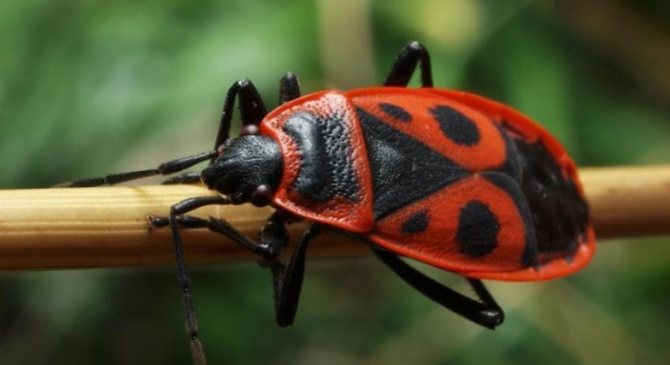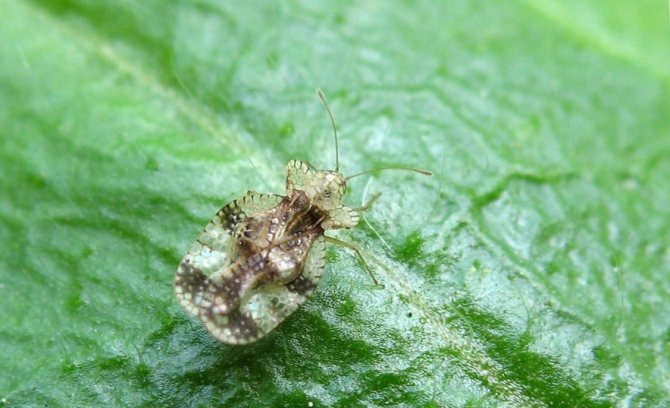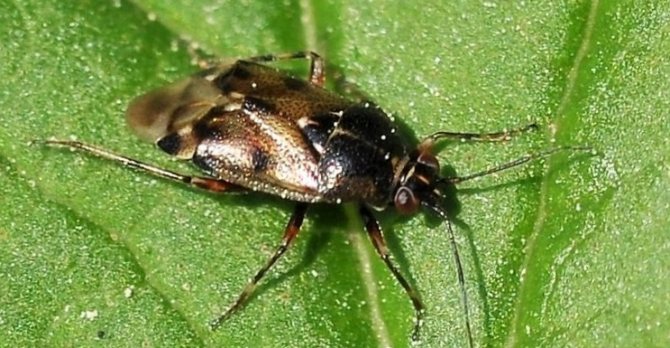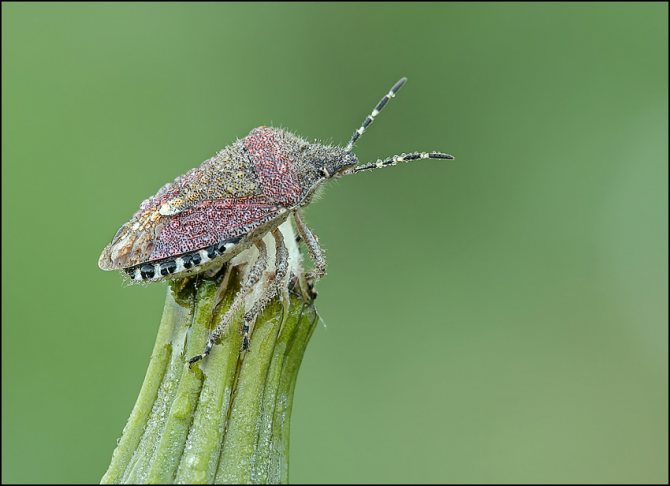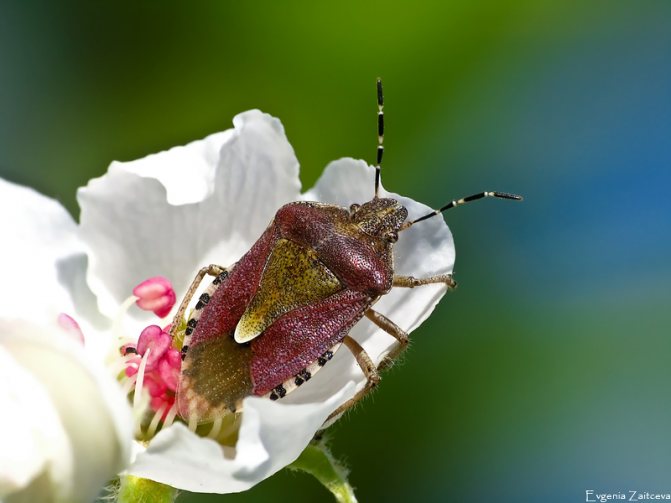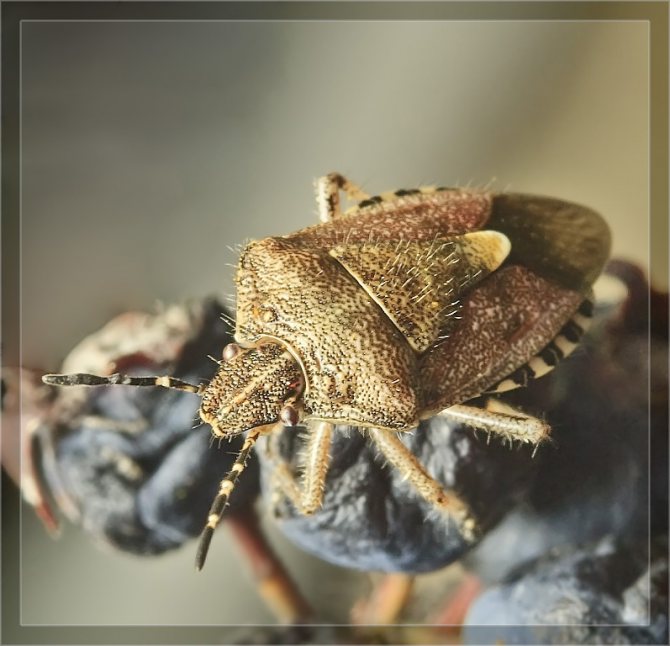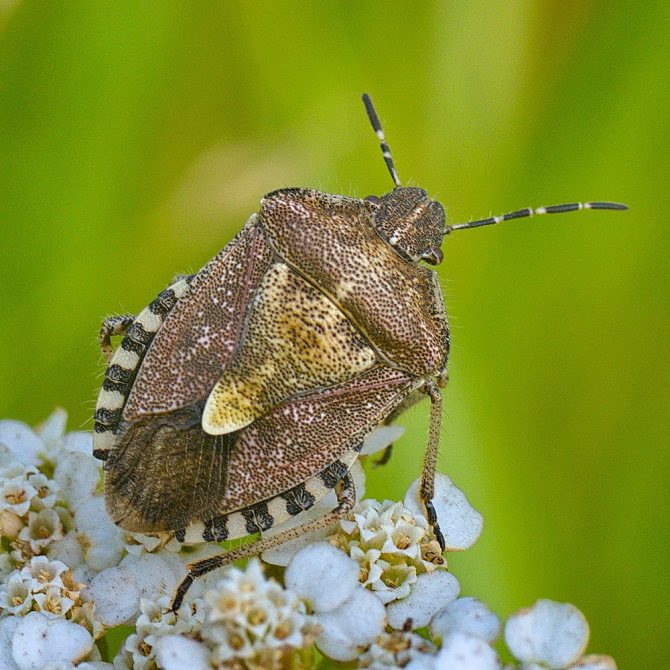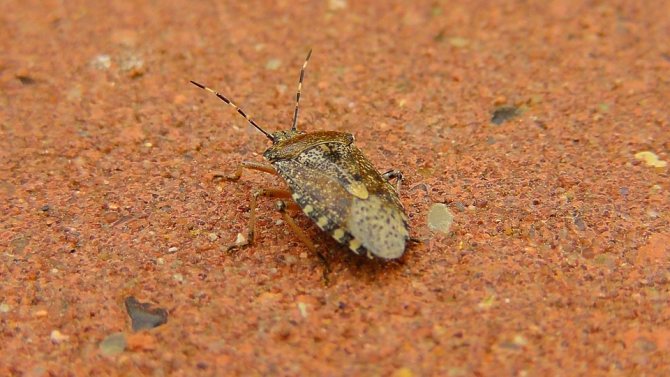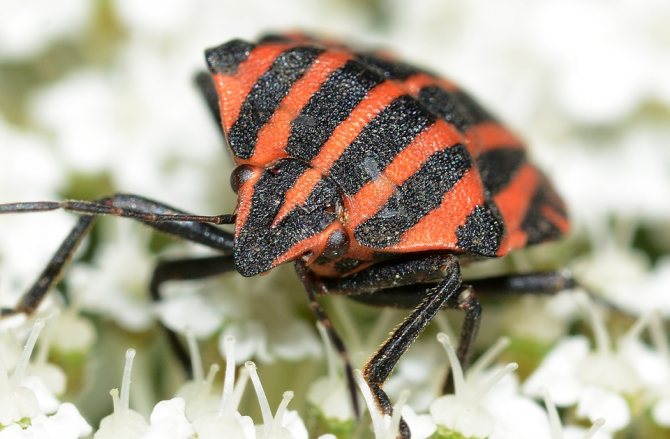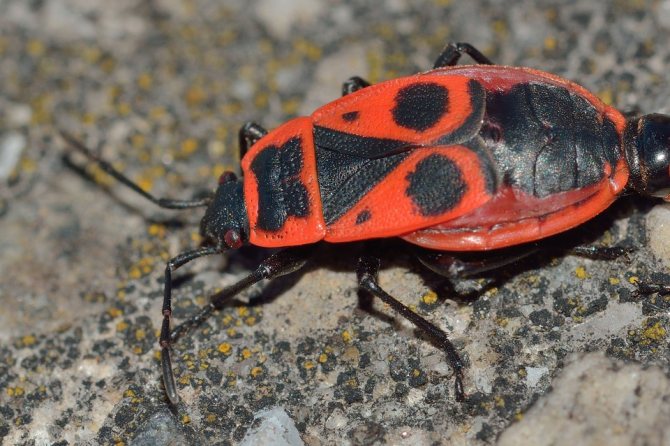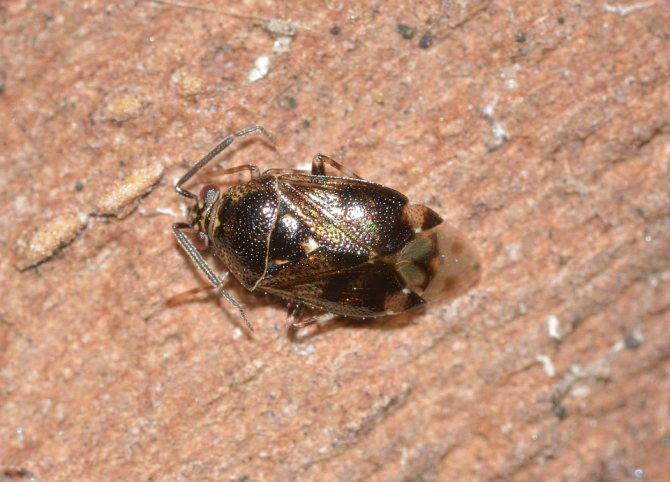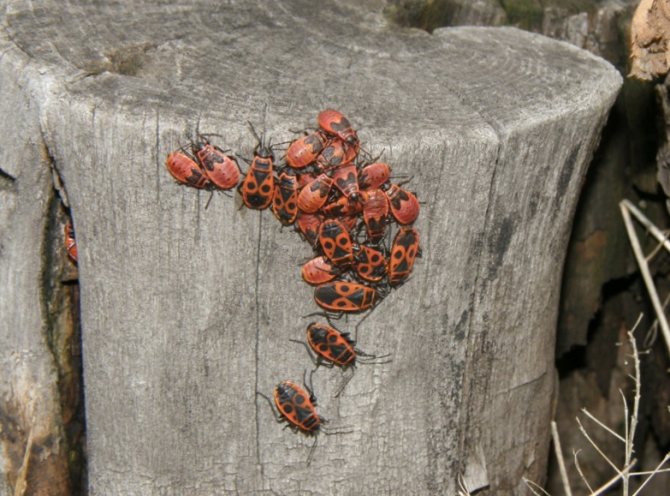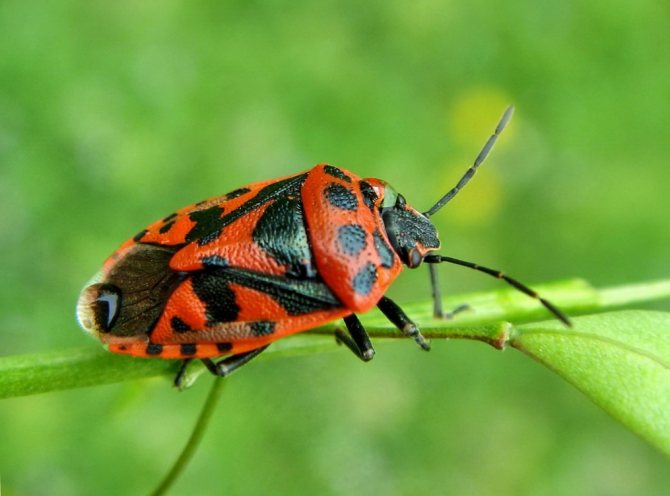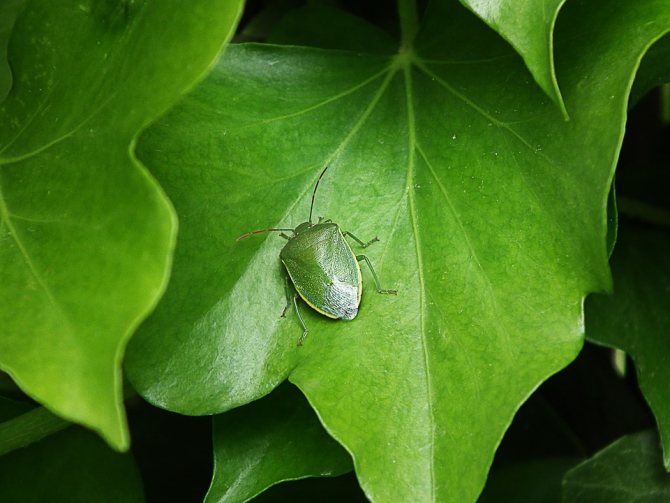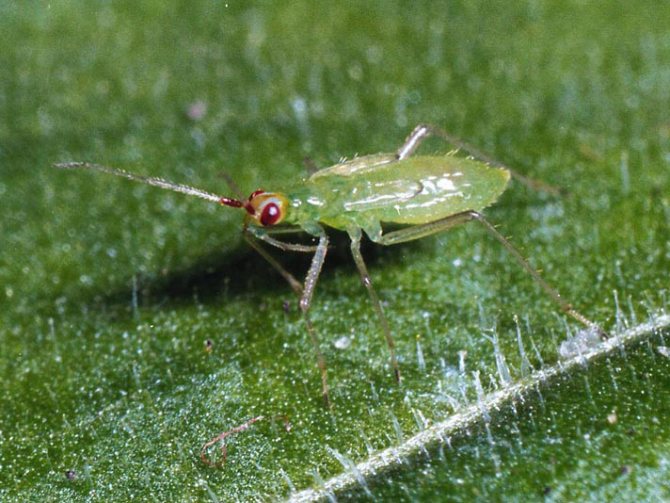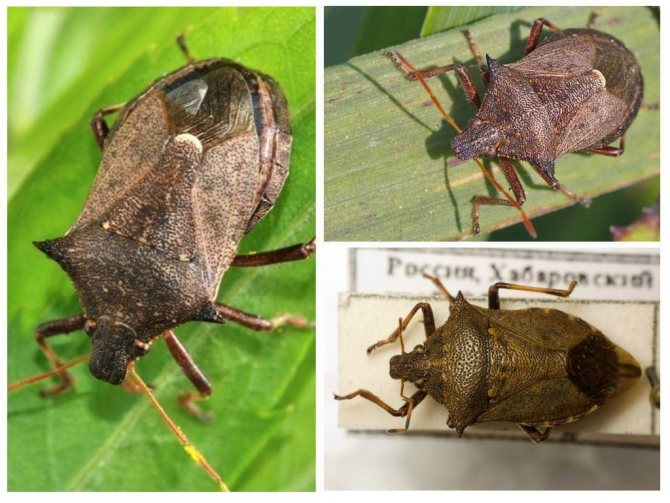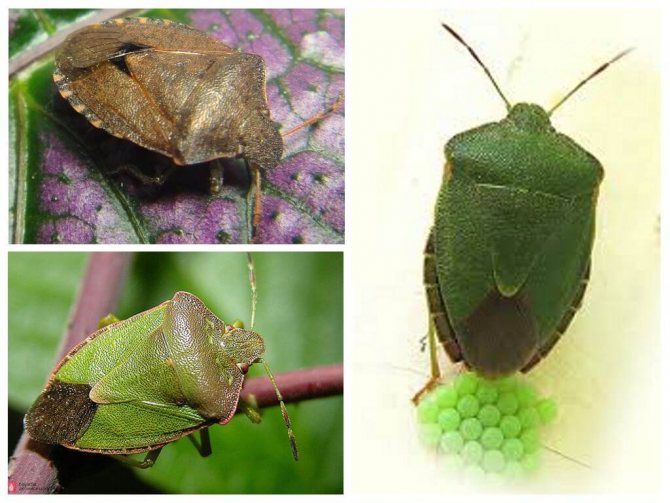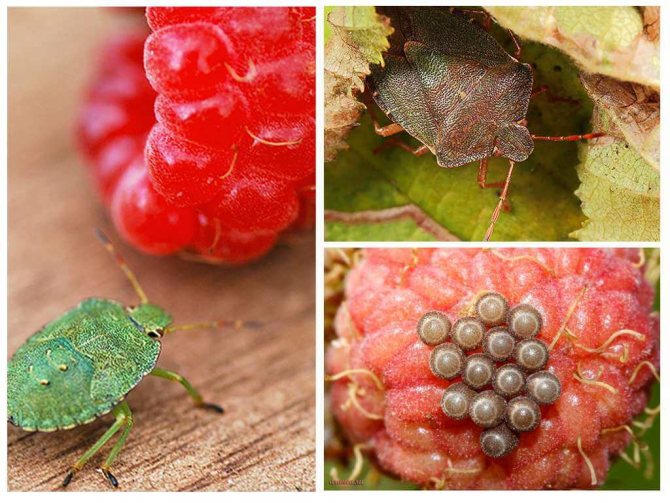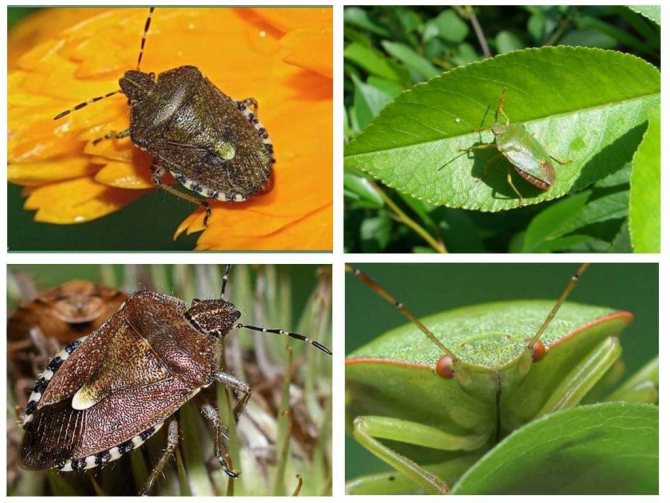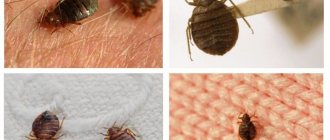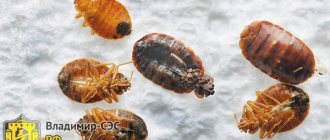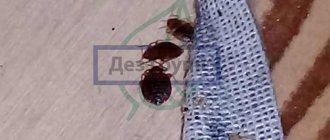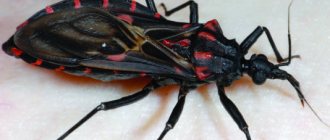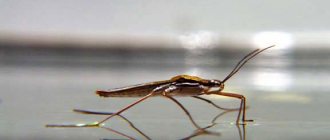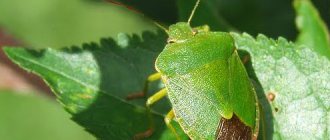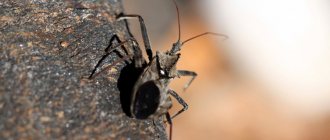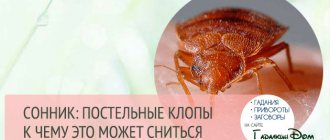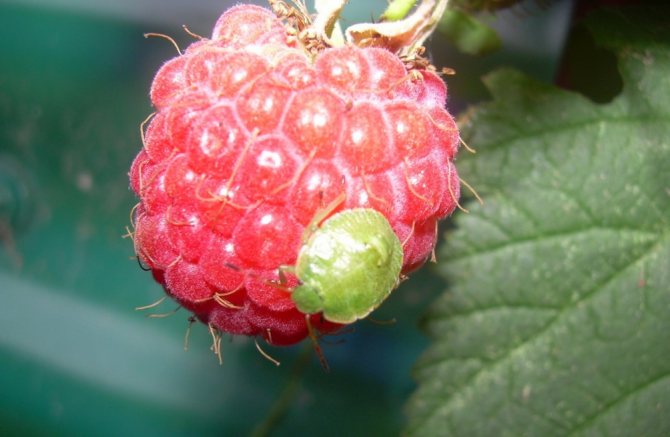
The garden bug, or, to put it more scientifically, the “shit bug”, is actually not just one species, but a whole biological family. In entomology, such a family of bugs is called "true shit bugs". Most often these are bugs, reaching a length of 8 to 18 mm. The habitat of garden bugs is very extensive. In fact, many of their species live wherever berry bushes and many types of deciduous trees grow. Based on this, we can say that these insects live on all continents except Antarctica. Wide temperature adaptation has led to the fact that some types of garden bugs can tolerate very high temperatures. Unfortunately, berry bushes are the main food of these insects.
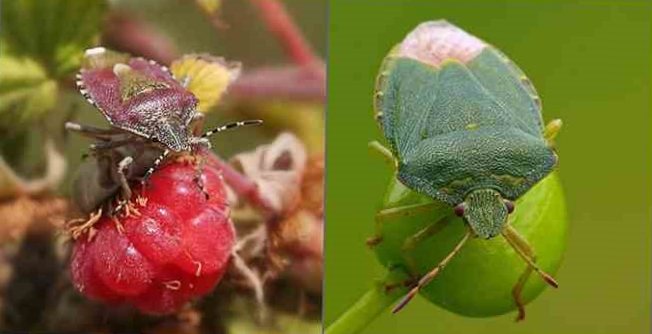

They love to feast on leaves from bushes of raspberries, blackberries, gooseberries, etc. It is these shrubs that are grown on most household plots and that is why such bugs in gardening are pests. Garden bugs, or as they are also called, garden bugs, can sometimes cause irreparable damage to crops growing on a personal plot. Therefore, most gardeners are fighting them by all means.
Being in nature, probably all of us have seen at least one representative of bedbugs - the stink bug shown in the photo
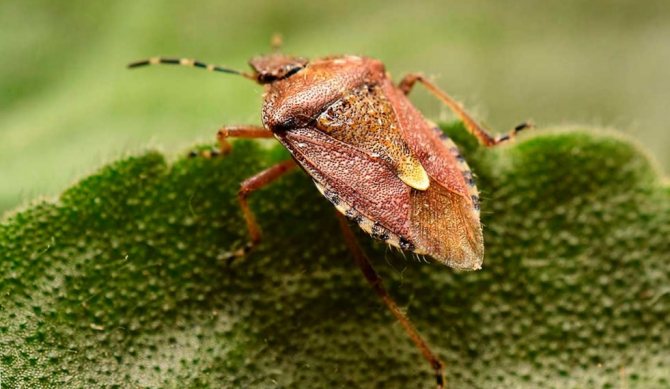

Unlike most of its brethren, it is not green, but bright brown. When in contact with it in order to protect its life, it emits an unpleasant pungent odor. That is why it has earned such a name.
On a note:
The stink bug can be safely called a pest, since it is herbivorous and feeds on the leaves of berry bushes. As for representatives of other types of bugs, most often they are green in color - this is not surprising, since in this way the insects merge with green leaves. It is this kind of disguise that makes it possible not to attract the attention of predators that feed on them.
The garden bug mostly feeds on the sap of fertile plants. Climbing onto a leaf, he pierces its skin with his mouth apparatus and sucks the juice out of it. Subsequently, due to this puncture, a characteristic brown spot forms on the leaf. And after a while, the leaf itself dies. The main danger is that if many leaves are damaged on one bush, then there is a danger that the plant will die. However, not all bugs are harmful to human economic activity, but quite the opposite. In addition to herbivores, there are also predatory bugs. In the process of their vital activity, they exterminate other insects, which are no less harmful and dangerous in gardening. Therefore, any amateur gardener should learn to distinguish between harmful and useful bugs.
Description of some popular individuals
Basically, garden bugs live in areas planted with cultivated plants and can be both in the role of dangerous pests, frankly harming plants and even directly to people, and useful helpers for gardeners in terms of exterminating other harmful insects.
We present to you the first representative of the garden bug - the stink bug, which, on the contrary, does not have a green color - this is the well-known berry stink bug.Yes, the one that, after contact, leaves a lusciously sweet and at the same time disgusting smell. Moreover, this type of bugs has a beautiful and bright color, which attracts attention. The berry bug lives on all berries growing in garden plots, like raspberries, currants, black chokeberry (chokeberry) and others.
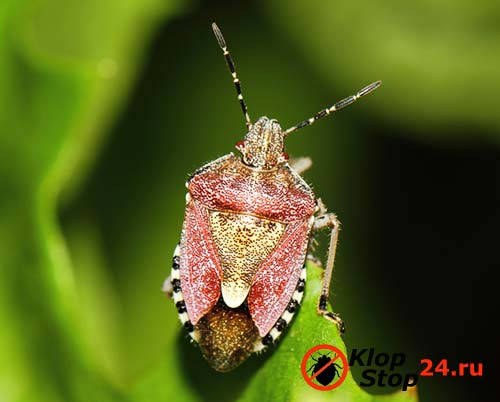

However, not all relatives of garden bugs are safe for plants, as some cause significant harm to cabbage and radish leaves, greenhouse cucumbers and pear trees. Insects feed on the sap of the above plants, for which they pierce the skin of leaves and young shoots, and then suck out the sap. After that, brown spots form on the damaged areas of the plants, and the leaves, respectively, die.
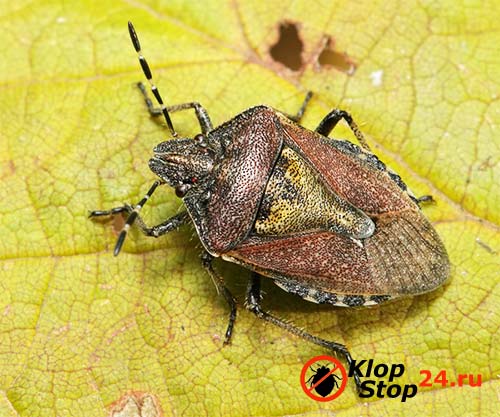

There is a known bug called the "harmful turtle", which is the worst enemy of agriculture on a national scale. Losses of cereal crops from such small insects amount to thousands and tens of thousands of tons of grain per year. Cases of attacks by bugs of a harmful pear turtle on orchards have been recorded, in which from a quarter to almost all seedlings of young trees perished during the season.
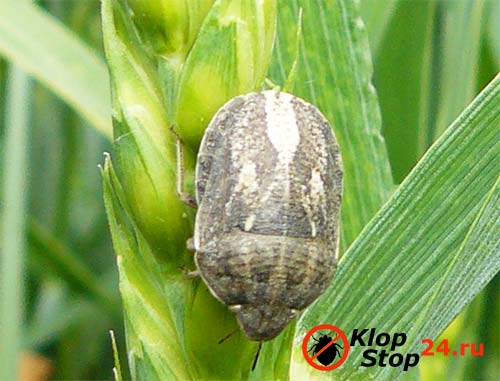

Thus, we figured out that some garden bugs are terrible enemies that you need to get rid of and know effective ways, and some, on the contrary, are companions for gardeners. So useful garden bugs are predators, therefore they actively fight against caterpillars of harmful butterflies, various aphids, thrips and even larvae and adults of Colorado beetles. Therefore, gardeners need to learn to distinguish between useful and harmful bugs and get rid of the latter, while not harming the helpers.
An interesting and informative video about the life of garden bugs:
Reasons for the appearance
For a long time, it was believed that dangerous insects start only where dirt and poverty reign. In recent years, the situation has changed: parasites often appear in the homes of wealthy people, where it is clean, rich and comfortable.
The reason is multiple ways of pests entering the home
It is important to know what points to pay attention to so as not to accidentally bring biting insects home.
Unpleasant "neighbors" appear in the dwelling in different ways:
- with new furniture purchased in the showroom. If harmful insects lived in the center of furniture sale, it will calmly "move" to new owners;
- crawl from other apartments through strangleholds, penetrate into open windows;
- along with purchased antiques. Antique books, paintings, furniture are a good refuge for biting insects;
- when buying clothes at the "flea market". Sometimes parasites remain in worn things, the new owner of a blouse or sweater learns about the existence of "neighbors" only by painful bites;
- after the trip. If bedbugs lived in an inexpensive hotel, there is a high risk of bringing parasites home among things.
What do harmful garden bugs look like and what they eat
A sufficient number of garden bugs, parasitizing on cultivated plants, is known. Moreover, there are known species that harm fruit and berry crops, so to speak, from birth. And there are representatives of individuals who are born to eat wild plants, but at the first opportunity they gladly switch to food in the nearest gardens and vegetable gardens.
- Forest green shtitnik, popularly referred to as the green garden bug... Here is a living example that easily switches to feeding on garden plants. From birth, he successfully feeds on forest trees and shrubs, but at the first opportunity, with a great desire, he will move to your garden plot and eagerly start eating raspberries, first of all, and then everything else.
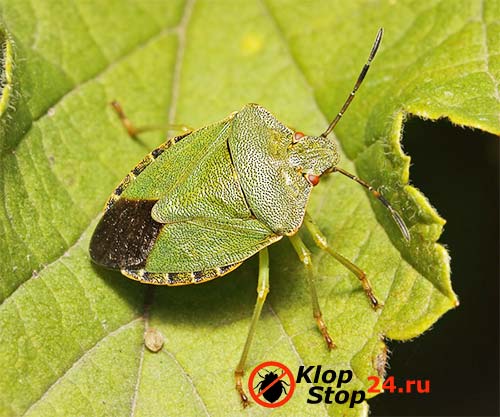

- The cruciferous bug is an even more harmful and dangerous type of insect, called by experts the northern eurydema... This type of bugs has external similarities with the usual soldier bug, but the damage is colossal, because feeds on radish and radish leaves, cabbage and watercress and similar plants. After the invasion of the cruciferous bug, these plants mostly die.
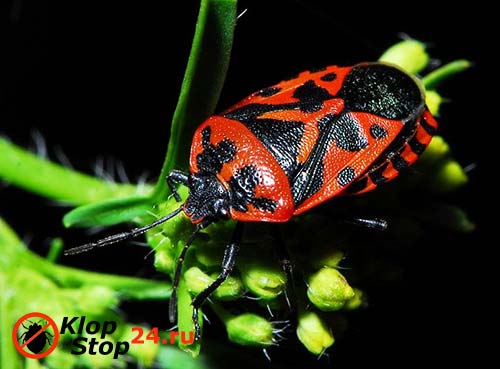

- Pear bug - upon meeting, with which at first glance everyone admires its lacy and unusual appearance, and affectionately called it - pear bug... However, the nature of this species is insidious and dangerous for pear and apple trees, quince, apricots, plums, cherries and others. The abundance of insects leads not only to the loss of fruit by trees, but also sometimes to the loss of the trees themselves by gardeners.
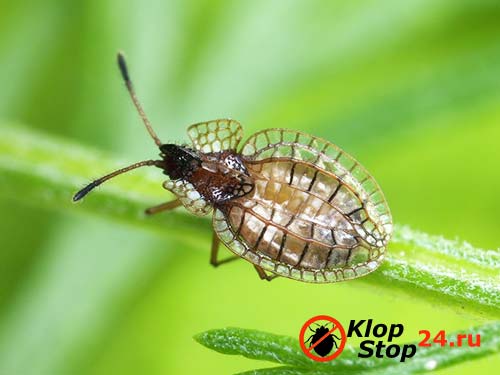

- Berry bug - we have already spoken about it above, we will only repeat that it harms the harvest of such berries as black and red currants, however, and will not refuse white, raspberries and gooseberries, chokeberries and some others.
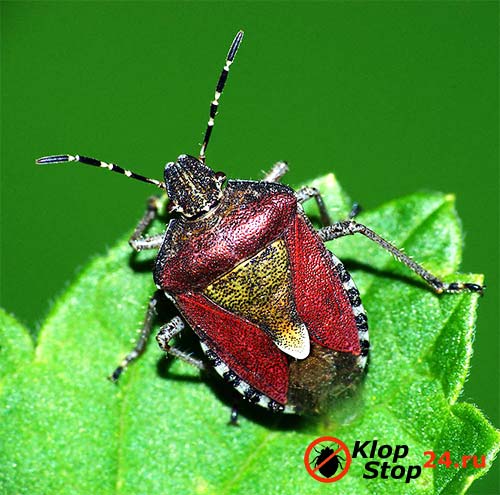

- Cucumber bug - very small, no more than 3 mm in length, mainly located on the underside of the leaves and at the same time jumps well and far. That is why you will have to work hard in the fight against the destruction of this bug. The cucumber bug quickly infects large greenhouses, while feeding on not only cucumbers, but also tomatoes, eggplants and bell peppers.
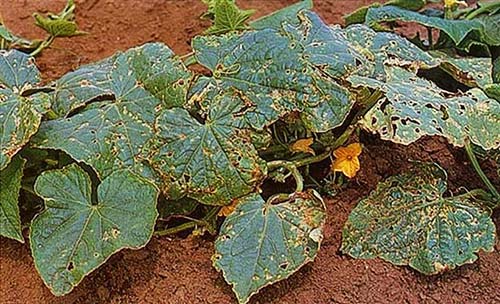

- Bug harmful turtle - we have already mentioned this species. In the classical form, it is practically not scary for gardeners and truck farmers, since its main diet is cereal plants. However, if food ceases to exist for him, he will easily switch to other plants and together in the company of his fellows can visit the garden plots nearby with fields.
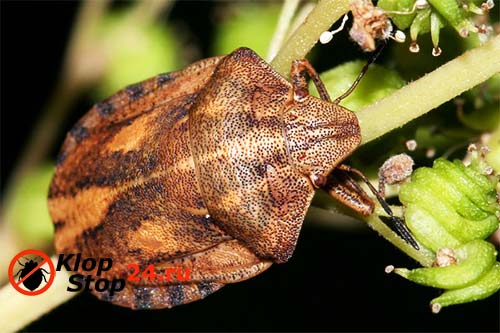

- The horsefly bug is a rather small insect., which has an inconspicuous appearance, but at the same time can bring significant harm to almost all garden plants. Experienced farmers call it "the scourge of all problems."
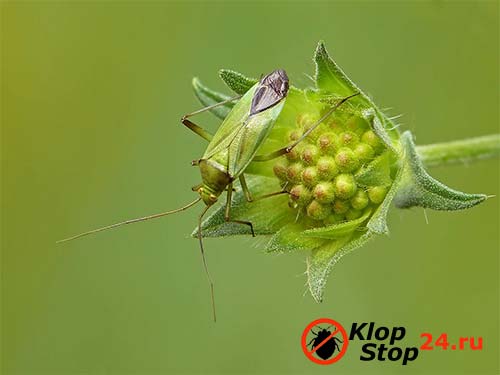

- Ringed predator - can be mainly found in areas where apiaries are located. The hunter directly on the bees themselves, settles on the flowers in anticipation of their prey.
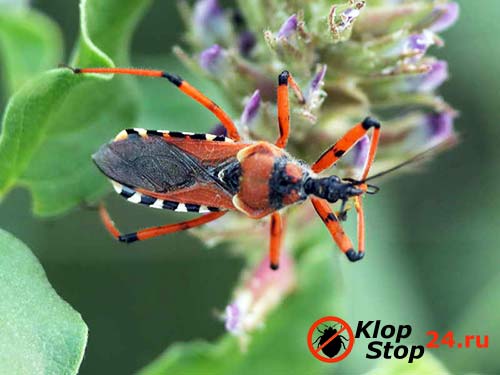

What wood pests are afraid of: ways to get rid of
In order to prevent the appearance of bush bugs next to cultivated plants, it is necessary to plant Tsimicifuga, popularly called Black Cohosh, which scares them off with its pungent odor.
Another option to save the inhabitants of the garden from the invasion of a small enemy is to spray with a decoction prepared on the basis of onion peel or mustard powder diluted in water. The pungent smell drowns out the natural aroma of cultivated crops, and pests cannot catch them. To prepare the solution for a bucket of water with a volume of 10 liters, dilute 100 grams of mustard or add 200 grams of onion peel.
If prevention did not help, then you will have to apply the oldest and most effective method of getting rid of unpleasant newcomers in the garden and garden plot - to collect them by hand. This will not be difficult due to the slowness of woody insects. On large bushes, it is quite difficult to notice the appearance of uninvited guests; their appearance at an early stage can be signaled by the appearance of brown specks on the leaves. It is necessary to inspect the plants periodically in order to detect and eliminate unpleasant inhabitants that can destroy them in time.
When the moment is already missed, to save the garden will have to resort to radical methods of real struggle. Strong chemical poisoning agents (karbofos, chlorophos) are used only in emergency cases, when there is a significant increase in the number of wood pests
Just pay special attention to the fact that chemicals will get into the soil and on the fruits of plants and can harm the human body.
Garden bugs and man
Known species of garden bugs from those living on the territory of Russia, it is believed that they cannot harm directly humans. Among insects of this species, quite soft proboscis, with which they cannot pierce human skin in order to bite.
However, there are already known cases when garden bugs have bitten people. Science does not yet know whether any species of garden bugs have mutated, whether it was possible to cross garden bugs with bed bugs feeding on human blood, or whether other types of bites were present. Therefore, at the moment, such bites are considered rather exceptions to the rule.
In South America and other tropical countries, triatomaceous bugs are known to live on agricultural land, which parasitize on mammals and humans. At the same time, they are dangerous in that they are carriers of the deadly Chagas disease.
But green garden bugs are famous for medical use, rather in alternative folk medicine. They are caught and insisted on vodka, in fact, they help in the fight against alcoholism.
Anticipating questions, we note that the life of bed bugs in the classic form of gardens and vegetable gardens does not occur. However, again, there are exceptions to the rules, in the case of used dacha villages all year round with heated premises and the introduction of these individuals by someone from outside.
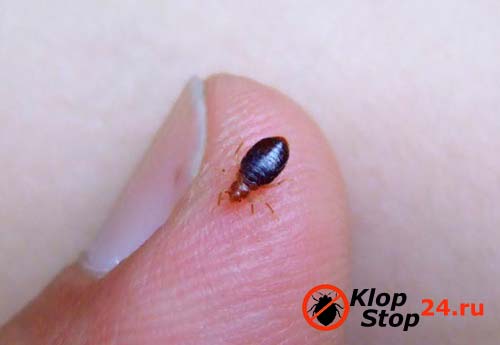

Pest control instructions
It should always be remembered that potent agents are used only in case of increased insect activity, when there is literally a "seizure" of your home.
Before disinfection, the first step is to prepare the room:
- remove bed linen, furniture covers, soak all clothes from the wardrobe for a day and wash;
- create free access to all places, items;
- for the duration of the disinfection, remove all pets from the premises, and after returning, it is imperative to redeem with special shampoos;
- take out unnecessary things (dishes, books).
Next, you should decide what means for destruction will be used. You can take folk recipes, for example, spraying cedar oil, kerosene, dust or chemicals (Sinuzan, Sichlor, Karbofos, Permethrin). Dichlorvos "Antiklop" can also be used at home. Recently, safe and effective drugs have gained popularity: Minap 22, Xulat C25.
In order to process the premises, protective ammunition is needed.
After the procedure, it is important to thoroughly ventilate everything and wipe the surfaces with a soda solution.
It is very undesirable to independently carry out actions to combat bedbugs. If you need an excellent result without harming your own health, you should seek help from professionals who have modern equipment, high-quality drugs and extensive experience behind them. But in any case, if you want to do everything yourself, strictly follow the sanitary and epidemiological rules of Disinsection.
A variety of bug bugs amaze with their variety of colors
One of the largest species in the family of bed bugs is the stink bug, which has over 4,000 subspecies. Moreover, among this type of insects there are both harmful to garden crops, and vice versa - beneficial. And the assistants are so helpful. That sometimes they are even bred on purpose.
Shield beetles have a characteristic difference from any other species of congeners - they are bright in color. For example, the famous Italian bug is said to have gotten its name from its bright and stylish color.
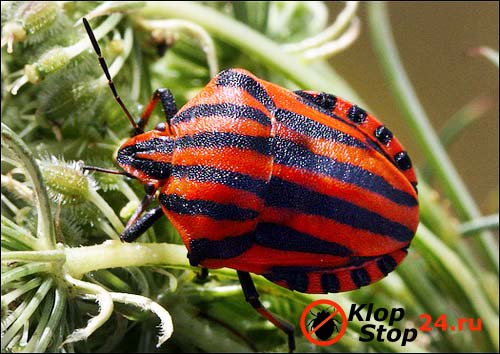

In this photo there is a two-faced red-legged brat, which plays "both yours and ours." It can feed on both pests and the trees themselves at the same time.
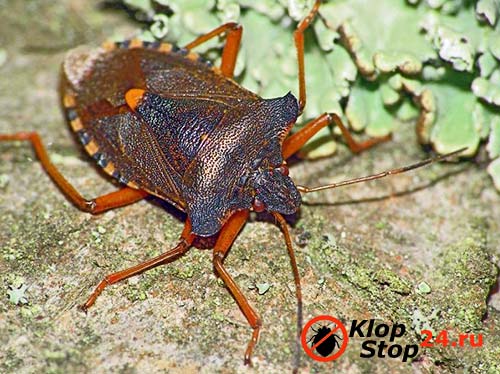

The boy has a gorgeous and unique color, but on this everything that can be said good about him stops. He brings no small harm.
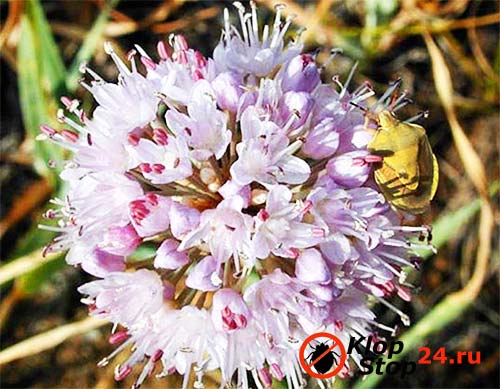

Unique ground bug.
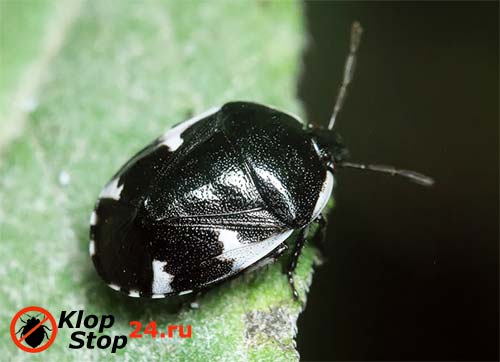

Reproduction
The mating season begins in early spring.For the entire warm season, the female makes two clutches. The eggs are light green with a lid. They resemble kegs. The larvae develop inside for about 14 days. When it comes time to get out, open the lids.
The larvae are initially white, but after half an hour they acquire a characteristic color. They look like small bugs, but without wings. For the entire stage of maturation - about 20 days, 5 molts pass. Each time they increase in size. At the last stage, the genitals and wings are formed. The size of an adult bug reaches 1.5 cm.
Reproduction of the green bug bug
Young bugs mate. After a few days, the female begins to lay eggs, and the male dies. Masonry is made on the leaves so that the larvae are provided with food immediately after birth.
Predatory bugs are human friends
On the territory of our country, a sufficient number of predatory bugs that help humans in the fight against pests are known. However, their merit is little known, they remain in the shadow of glory, therefore, they practically do not attract attention to themselves, and in a collision they rather cause a feeling of irritation or danger than gratitude, because of the anti-glory of their relatives.
In the first place should be put a worthy bush bug - the two-century perillus bug (Perillus bioculatus), which quickly and effectively exterminates the larvae and adult Colorado beetles. It's even a shame that almost no one knows about this bug, but the merits of the guinea fowl are on everyone's lips. However, this individual was specially brought from North America to Europe several times. Unfortunately, this species of so beneficial insects does not take root in the harsh climate of Russia, only a small number of populations were found in the Krasnodar Territory that were able to acclimatize and successfully winter.
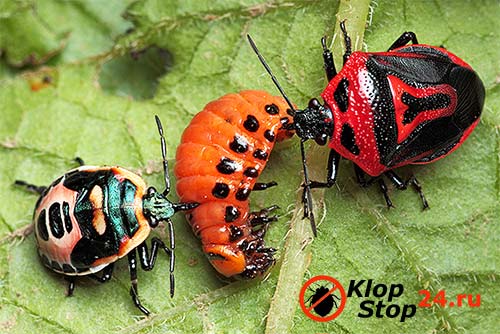

Pikromerus is another human friend and helper in the fight against harmful caterpillars and their larvae. In addition, it also fights the larvae of the moth, Colorado potato beetle and sawflies. It lives mainly in Europe and the European part of Russia.
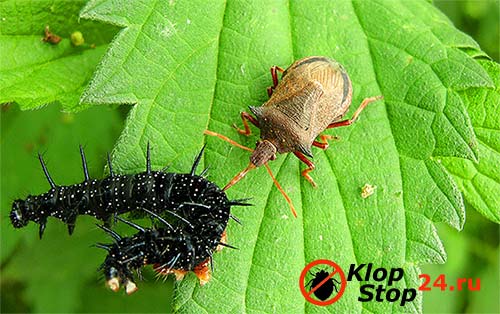

Pozidus is the most useful type of bugs, which is specially bred and released into fields with agricultural crops in the spring. Unfortunately, this species also cannot survive our winter.
Beetles entering houses
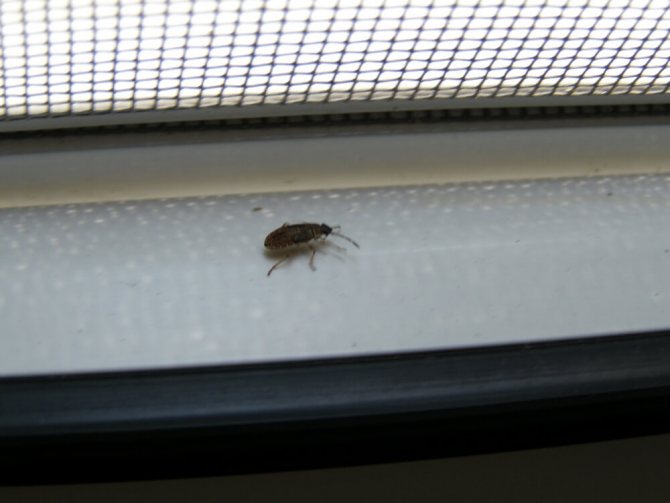

Tree bugs are very rare guests in living quarters. The insect's food preferences do not allow them to live in an apartment. But these stubborn parasites brazenly get into the room through the windows. Then, alarmed by the unfamiliar environment, they clumsily try to fly and look for a way out. This behavior of the insect is due to a sharp change in weather.
You should not take any methods of dealing with green pests in the house. It will be enough to catch the insect and release it into the street. Ordinary mosquito nets installed on the windows will save you from unexpected guests.
Famous soldiers or ordinary redblogs
This type of garden bugs does not require a special introduction, since there is probably no person who has never met with them. A distinctive feature of this type of bugs from others is their coloniality, thanks to which they are deliberately noticeable in their bright color. As a rule, these individuals are harmless to humans and the economy, but sometimes they can harm plants because of their dominance.
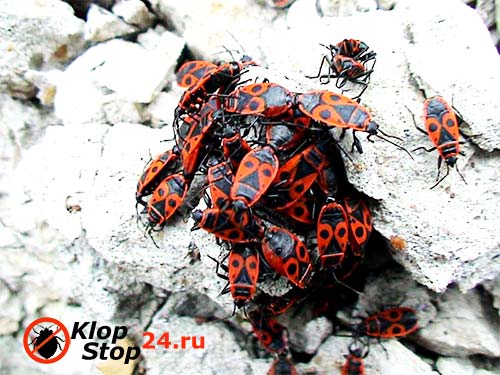

Soldiers feed on plant and animal food, for example, rotting remains of fruits and plants, dead insects, etc. Only in the absence of food can such bugs move to the shoots of young trees and grapes, thereby damaging them.
Video fragments from the life of soldiers' bedbugs can be viewed on the video for everyone:
Insect varieties
The family of scutes is characterized by brightly colored medium to large ground bugs with flat backs in the form of shields.Of the varieties, the families of true bush bugs are known, earthen, hemispherical, arboreal or berry, bug bugs, and many others.
- The family of true bush bugs has up to 4,000 varieties, the size of insects is from 0.8 to 1.8 cm, more than 200 species live on the European territory. Of the varieties of this family, the ruled boreweed stands out with a bright color. It was nicknamed the Italian bug for its red back with black stripes, similar in color to the uniform of the Vatican guards.
- The family of ground bugbears has more than 700 species, lives on the surface of the earth, feeds on roots and is harmful to some species of cereals and peanuts. The family of hemispherical scutellids has more than 500 species, ranging in size from 0.2 to 2 cm; representatives have a rounded carapace that reaches the abdomen.
- The family of turtles is small in number, numbering no more than 100 species. The insect is from 0.6 to 1.5 cm in size. They are considered the most powerful pests of agriculture, live in the fields, plant sap serves as food for turtles.
- Woodpeck bugs are a family of no more than 200 varieties. The size of the insect can be from 0.5 to 3.5 cm. They live on trees and shrubs, feed on foliage. The most famous varieties are green and gray wood bugs, wood bugs.
- The gray bug is a small bug that is 0.5 to 0.8 cm long. Habitat - trees such as birch, beech, holly, alder, spruce. The green shit bug or berry is a large insect up to 3.5 cm long, lives on trees and shrubs, more often in raspberries, feeds on the juice of foliage and berries. It is considered a pest of agricultural crops.
In the picture, the varieties of bedbugs:
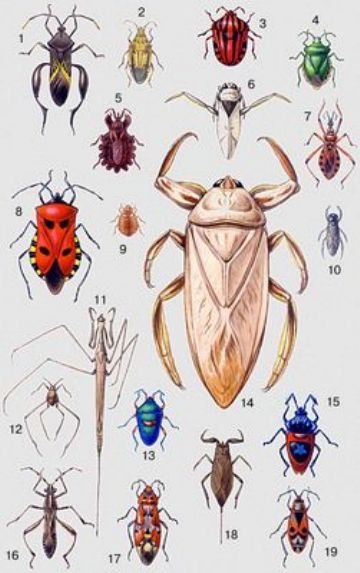

- edge;
- pointed-headed bush bug;
- italian bug bug;
- woody green buntin;
- undercorn;
- smooth;
- predator;
- shit bug catacanthus incarnatus;
- bed bug;
- streaked rowboat;
- ranatra;
- sea water strider;
- the "senator" bug;
- water bug;
- coryza chrysocoris silatus;
- edge;
- skin bug;
- water scorpion;
- soldier bug.
Tree bug
The tree bug has a large flat body. Coloration
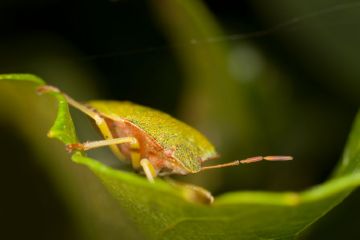

insect depends on the season: in summer it is light green, merging with the green of summer foliage; closer to autumn, the green color is diluted with brown-brown spots, and in the midst of autumn, the insect merges with the crimson-orange color of autumn trees.
In the back of the body, brown wings hide under the shield, which the bug does not use very often. Its wings have a small span and insufficient strength for the insect to easily take off, so lifting into the air for a bug is a very energy-intensive business.
The bug bug makes flights only when it is necessary to search for new food.
How to get rid of garden pest bugs
As soon as you find characteristic damage on garden plants or in greenhouses, and a personal meeting has confirmed the presence of these individuals, you should immediately start fighting.
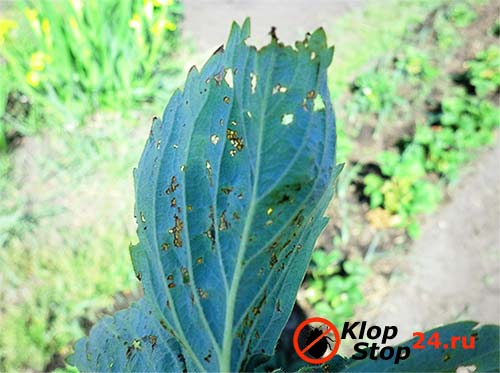

Methods and methods for the destruction of garden bugs are divided into agrotechnical and chemical, as, in principle, other harmful insects.
Chemicals are produced by spraying plants with insecticides, pyrethroid or organophosphorus groups are used. Please note that you need to process, or rather, pickle both sides of the leaves. We recommend that you pay attention to such a remedy as Aktara, which is characterized by a selective action - it actively destroys harmful bugs, while practically not causing damage to useful individuals.
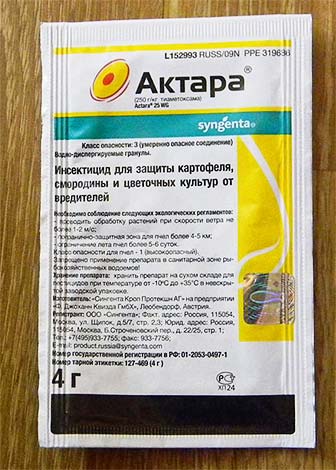

Agrotechnical - it is natural to harvest fallen leaves in the autumn, as an adult successfully endures winter in it. Also, in the fight against pests, plowing between rows or the entire territory of the site will contribute. In addition, the smell of a plant called cymimifuga, which needs to be planted somewhere on the site, will help in the fight.
Chemicals
It is worth fighting the invasion of parasites with the help of special pesticides only in advanced cases, when the problem has become large. It should be remembered that the use of such drugs can harm beneficial insects, birds, animals, so you should resort to their help in emergency situations.
These chemicals contain insecticidal components of the pyrethroid and organophosphorus groups. By the type of action on pests, they are divided into systemic, contact and intestinal.
Features of life
Redlope is one of the most brightly colored insects in our latitudes. Its colonies, numbering from 500 to 20 thousand individuals, are impressive.
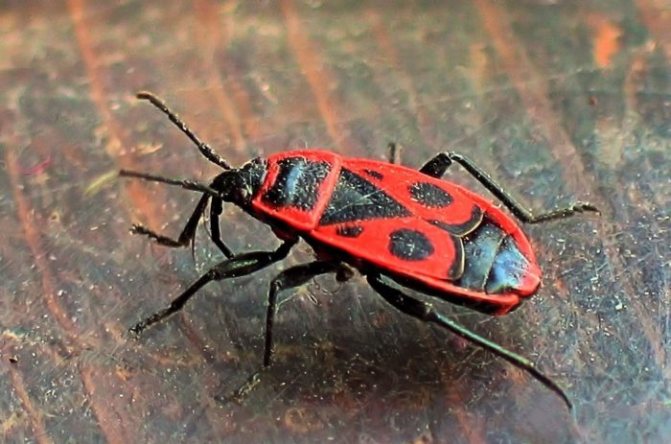

The body of the soldier bug is flat, even flattened
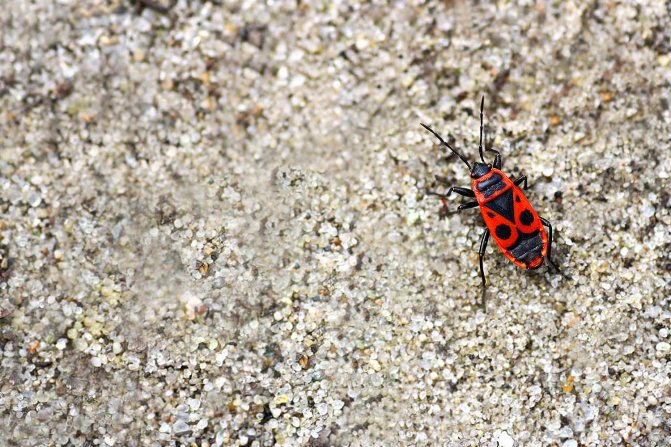

The main food is plant sap, fruits of berry, fruit and vegetable crops. In the garden, it damages the tops. Due to the attack of a large colony of pests, you can lose the planned harvest in just a month. It is easy to distinguish a soldier from other types of bugs: he has a red body with a characteristic pattern of two dots and black triangles, concave rhombuses on the back. Young insects are usually red-orange, without spots. Individuals with a bright yellow coloration are rare.
What soldier bugs eat is interesting for gardeners, gardeners. You need to know whether it is worth fighting, how to react to it.
The soldier bug has a piercing-sucking apparatus. It feeds on plant juices. It pierces a leaf plate, draws out juices with a proboscis. You can notice it on any garden, vegetable garden, settles on weeds. In addition to plant sap, soldiers eat small insects, suck sap from already dead bodies, as well as from fallen fruits and seeds.
Insects live in small colonies. A mass congestion can be seen on stumps, along fences, near pots, a fallen tree. They like to warm their backs in the sun. Active in the warm season. With the onset of cold weather, they choose secluded places, climb into cracks, under mounds of leaves, branches, stumps.
The mating process lasts about a week. The female connects to the male with the back of the body. In this state, the seminal fluid enters the female. A few days later, the female soldier lays eggs.
After 10 days, larvae appear from there, which differ from adults only in body size. Immediately after birth, they begin active nutrition. Sexual activity is reached after about a month of life.

